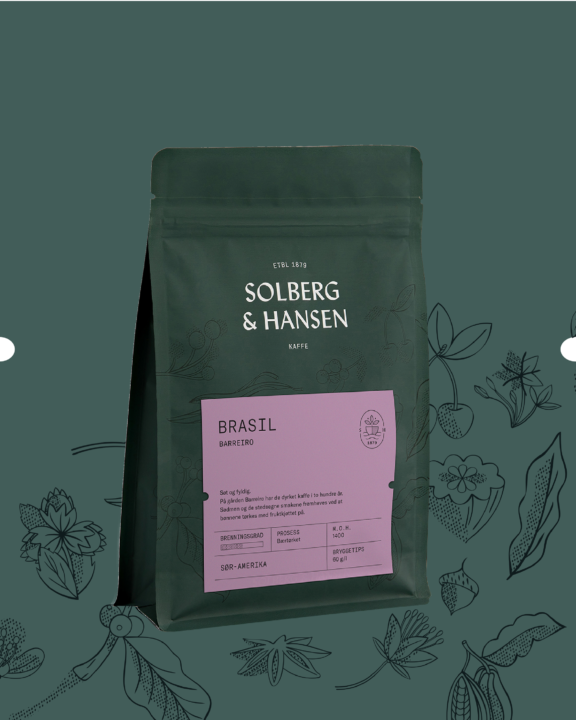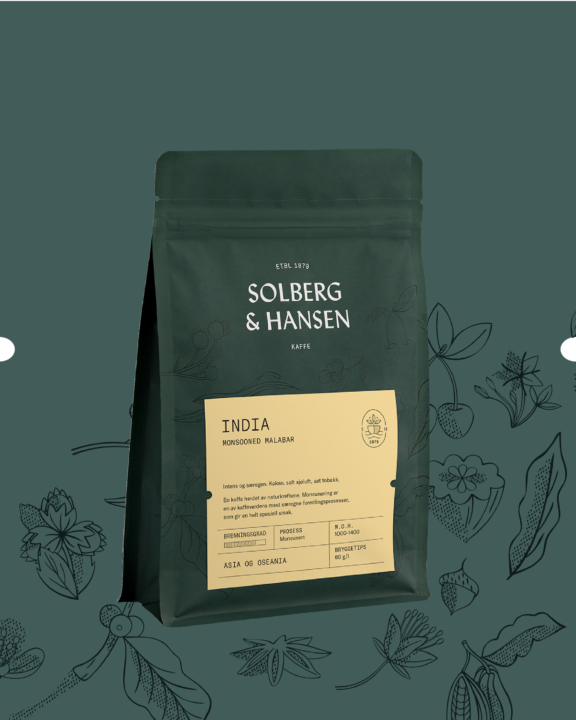SANS is a series of coffee lots with a focus on flavor. Here you'll find coffee with a flavor experience based on country, region or type of processing.
Since 1879, Solberg & Hansen has traveled the world in search of good coffee. This has given us knowledge and understanding of all the details that affect the taste. Bean types, soil, climate and roasting are just some of the factors that give each coffee its individuality. The taste is different, but every single coffee bean has something in common: they are specially selected raw materials from the best growing areas in the world.
SANS is a series of coffee batches that awaken your senses. Coffee where origin, region, raw material and taste are in focus. At Solberg & Hansen, we know what makes a good coffee, but you know best what you like.
Close your eyes and use your senses to find your favorite.
The taste of Brazil

The flavors that characterize a classic Brazilian coffee can be found in our classic from Barreiro in Brazil. This is in our SANS category because it tastes like Brazilian coffee should, with notes of nuts, chocolate and dried fruit.
Brazilian coffee is round and full-bodied with lots of delicious fruit sweetness and low acidity. Nougat, nuts and chocolate are common flavor references and have ensured that the coffee has a broad appeal. Brazil - Barreiro is a coffee with a taste experience based on Brazil. In this SANS coffee, you get to experience a classic Brazilian coffee.
Monsooned Malabar - a unique process

Monsooned Malabar from India is categorized as a SANS coffee because it undergoes a unique processing method called monsooning, which leaves characteristic flavor notes in the coffee beans.
In monsooning, the coffee beans are exposed to the Asian monsoon, where sea air, humid weather and heat cause the beans to swell and change color. This gives a unique flavor of sweet tobacco and vanilla, which has made monsooned coffee famous around the world. The processing method originated by chance when coffee was transported by ship from India to England in the 1700s. The distinctive taste that the increased humidity and temperature fluctuations gave the coffee was something that eventually characterized coffee from India.
When coffee was no longer transported by open sailing ships, Indian coffee farmers had to find new ways to expose the coffee to increased humidity to get its distinctive flavor. Today, the coffee beans are left to dry in large warehouses without walls when the monsoon arrives.
This processing method is unique to India and is considered one of the most special in the coffee world.
Monsooned Malabar is a coffee that has been part of much of Solberg & Hansen's journey. We can date Malabar as part of our range all the way back to the early 1900s.